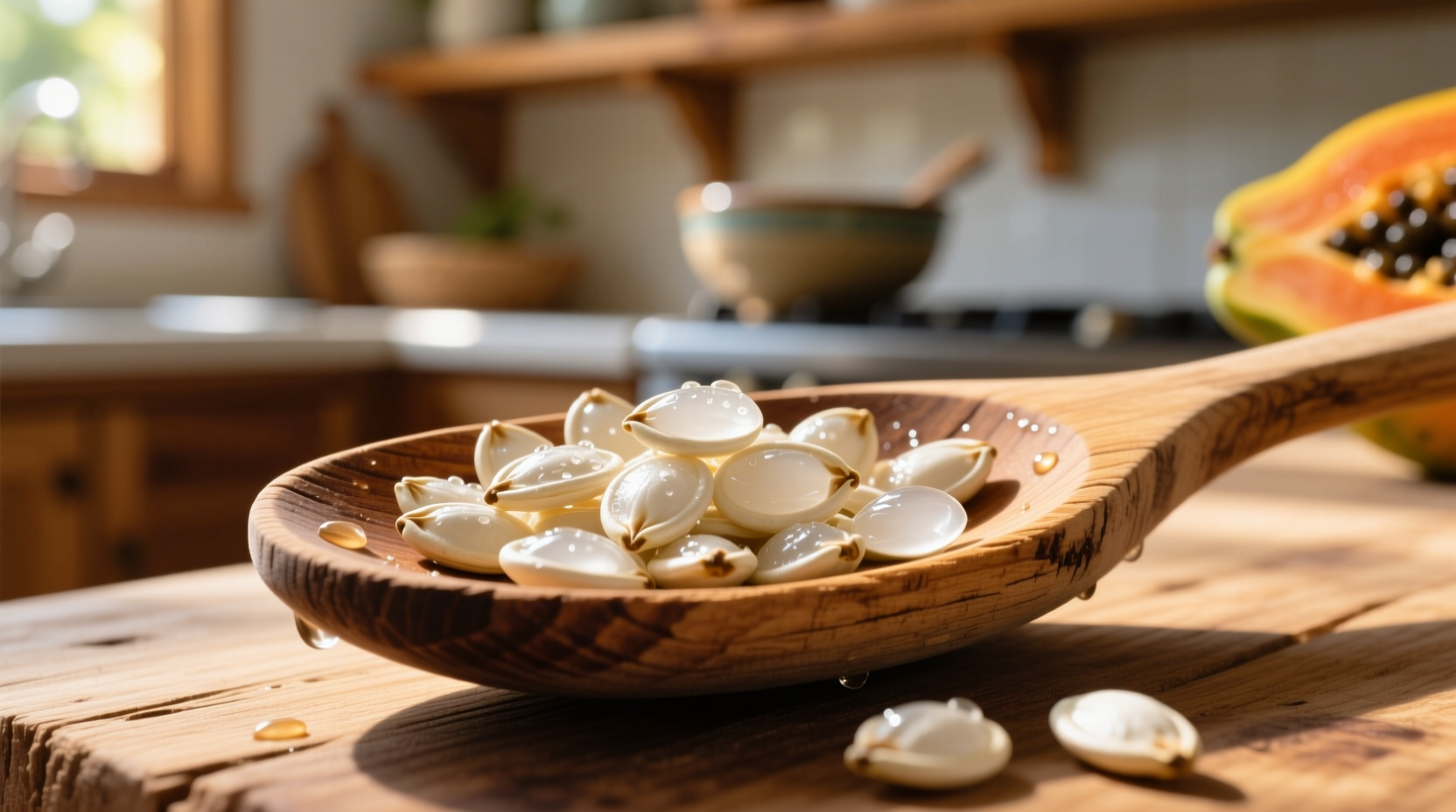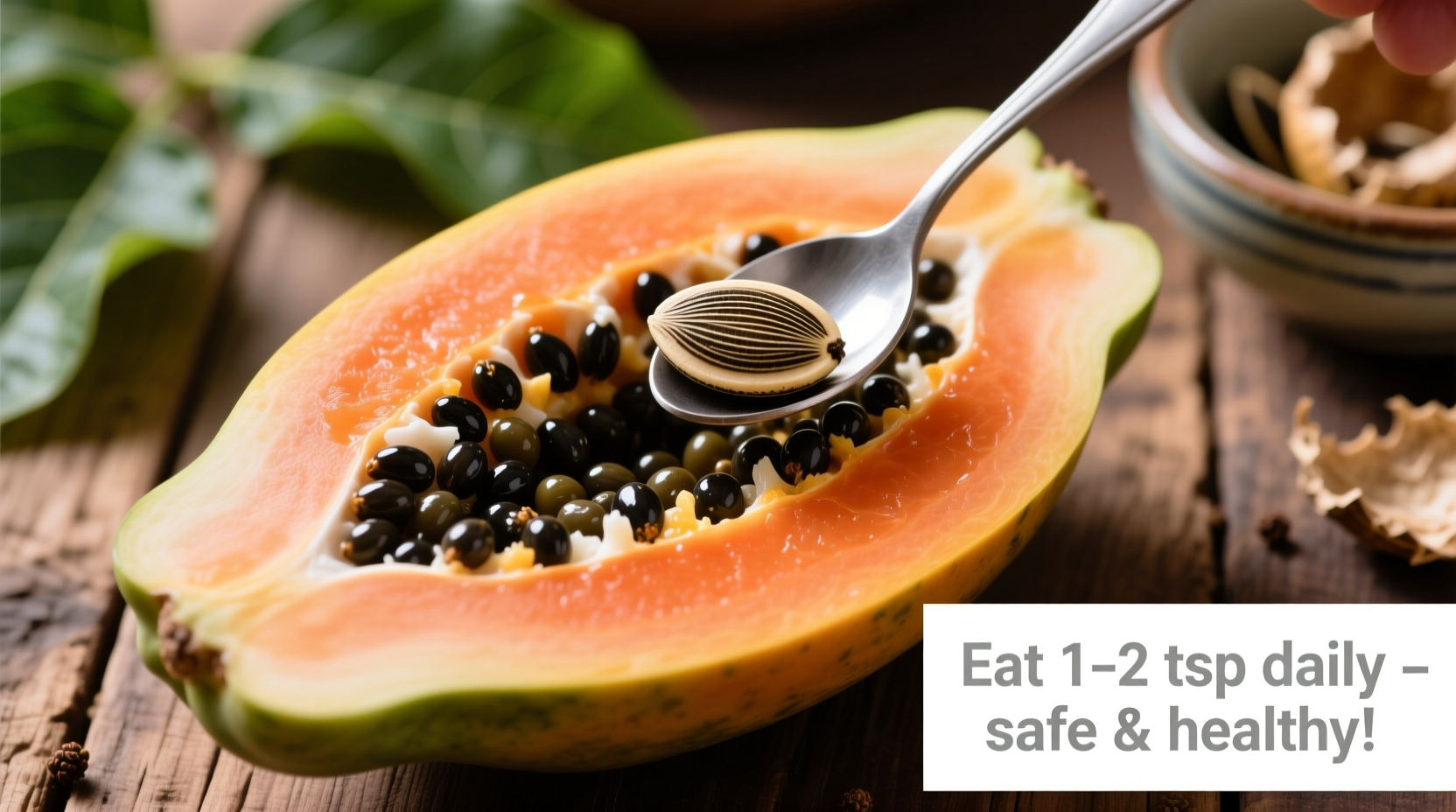Yes, you can safely eat papaya seeds—they're edible, nutritious, and add a peppery kick to dishes. Simply rinse them, dry thoroughly, and consume raw, toasted, or ground. Limit intake to 1-2 teaspoons daily due to their potent compounds.
Most people toss papaya seeds without realizing they're packed with nutrients and culinary potential. As someone who's worked with professional chefs across continents, I've seen how this overlooked ingredient transforms simple dishes. In this guide, you'll discover practical, chef-tested methods to incorporate papaya seeds into your meals while maximizing their benefits.
Why You've Been Missing Out on Papaya Seeds
Papaya seeds often get discarded during fruit preparation, but traditional cuisines across tropical regions have valued them for centuries. Unlike many food waste reduction trends, this practice has genuine culinary merit. The seeds contain healthy fats, protein, and compounds like benzyl isothiocyanate that contribute both flavor and potential health benefits.

Safety First: Who Should Avoid Papaya Seeds
While papaya seeds are safe for most adults, certain groups should exercise caution:
| Group | Recommendation | Scientific Basis |
|---|---|---|
| Pregnant women | Avoid consumption | Studies suggest potential uterine stimulation (Journal of Ethnopharmacology, 2011) |
| Kidney disease patients | Limited intake | High potassium content may affect kidney function (USDA FoodData) |
| Healthy adults | 1-2 tsp daily | Optimal balance of benefits without digestive discomfort |
Step-by-Step: Preparing Papaya Seeds Properly
Proper preparation makes all the difference in flavor and texture:
- Extraction: Scoop seeds from ripe papaya using a spoon, keeping the gel-like membrane attached
- Cleaning: Place seeds in a fine-mesh strainer and rub under cold water to remove membrane
- Drying: Spread on parchment paper; air-dry for 24-48 hours or dehydrate at 115°F (46°C) for 6-8 hours
- Testing: Properly dried seeds should feel hard and snap when bent
Flavor Profile & Culinary Applications
Papaya seeds deliver a distinctive taste experience:
- Raw: Mildly bitter with peppery notes (similar to watercress)
- Toasted: Develops nutty, black pepper-like flavor
- Ground: Creates a citrusy-peppery seasoning
Professional chefs use them in three primary ways:
1. As a Pepper Substitute
"I replace black pepper with ground papaya seeds in salad dressings," explains Antonio Rodriguez, chef at a Michelin-recognized restaurant. "The citrus notes complement vinaigrettes better than traditional pepper."
2. In Marinades and Rubs
Combine 1 teaspoon ground seeds with:
- 2 tbsp olive oil
- 1 minced garlic clove
- 1 tsp honey
- Pinch of salt
Perfect for chicken or fish—let sit 30 minutes before cooking.
3. In Salad Toppings
Lightly toast whole seeds in a dry pan for 2-3 minutes until they pop. Sprinkle over:
- Green salads
- Avocado toast
- Grain bowls
Nutritional Benefits: What Science Says
Research shows papaya seeds contain valuable compounds:
| Nutrient | Per 1 Tbsp (10g) | Health Benefit |
|---|---|---|
| Protein | 1.2g | Supports muscle maintenance |
| Healthy fats | 2.8g | Promotes heart health (USDA FoodData Central) |
| Benzyl isothiocyanate | Trace amounts | Antimicrobial properties (Journal of Agricultural and Food Chemistry) |
| Dietary fiber | 1.5g | Aids digestion |
Storage Techniques for Maximum Freshness
Preserve your prepared seeds properly:
- Short-term (2-3 weeks): Store dried seeds in airtight container at room temperature
- Medium-term (2 months): Refrigerate in glass jar with silica packet
- Long-term (6+ months): Freeze in vacuum-sealed bags
Pro tip: Label containers with preparation date—flavor intensity diminishes after 3 months even when properly stored.
Three Chef-Approved Recipes to Try Today
Papaya Seed Vinaigrette
Blend:
- 1 tbsp ground papaya seeds
- 3 tbsp extra virgin olive oil
- 1 tbsp apple cider vinegar
- 1 tsp Dijon mustard
- Pinch of sea salt
Perfect for kale or arugula salads.
Toasted Seed Crust for Fish
Mix 2 tbsp toasted seeds with:
- 1 tbsp panko breadcrumbs
- 1 tsp lemon zest
- 1/2 tsp garlic powder
Press onto fish fillets before baking at 400°F (200°C) for 12-15 minutes.
Seeded Papaya Smoothie Booster
Add 1 tsp ground seeds to your favorite smoothie recipe. The peppery notes balance sweet fruits beautifully while adding nutritional value.
Common Mistakes to Avoid
Based on culinary experience, these errors ruin papaya seed preparations:
- Skipping the drying step: Wet seeds won't toast properly and develop mold quickly
- Over-toasting: Burns create bitter flavors (toast just until they darken slightly)
- Using too much: Their potent flavor dominates dishes (start with 1/2 tsp and adjust)
- Storing near strong odors: Seeds absorb surrounding smells (keep in airtight containers)
Historical Context: Papaya Seeds Across Cultures
Papaya seed usage spans centuries and continents:
- Pre-1500s: Indigenous peoples in Mesoamerica consumed papaya seeds for digestive health
- 16th century: Spanish explorers documented Caribbean natives using seeds as pepper substitute
- 19th century: African traditional medicine incorporated seeds for parasite treatment
- Modern era: Culinary professionals rediscover seeds as sustainable ingredient
This historical timeline shows how traditional knowledge often precedes scientific validation—a pattern repeated with many food ingredients.











 浙公网安备
33010002000092号
浙公网安备
33010002000092号 浙B2-20120091-4
浙B2-20120091-4